For many fitness seekers, fat loss is a primary goal. When an exercise session is designed to promote fat loss, and it does so efficiently, the workout becomes even more appealing, especially for those who are short on time. To lose body fat, a person must burn more calories than he or she consumes on average, over time. From a mathematical standpoint, this is typically accomplished in three ways: (1) increase calorie burning through exercise, (2) decrease calorie intake through dietary modification, or (3) both. Thus, the more calories a person burns related to exercise, the more efficiently fat loss will occur, as long as eating patterns are in line with weight-loss goals.
One way to enhance the calorie burn during a fat loss workout is to perform whole-body movements at higher intensities. Not only does this result in a higher energy output, it also leads to slightly elevated calorie burning for several hours after the workout, a process researchers call excess post-exercise oxygen consumption (EPOC). During this period, a measurably increased rate of oxygen uptake occurs as several physiological processes take place to restore the body to a resting state and adapt it to the exercise just performed. These physiological adjustments include hormone balancing, replenishment of fuel stores, cellular repair and anabolism (e.g., muscle building). The following functional training exercises promote vigorous intensity and involve whole-body movements to capitalize on EPOC. Due to the strenuous nature of these movements, this workout is not recommended for novice exercisers. Perform 10 repetitions of each movement (or 10 repetitions on each side for movements that are unilateral) with minimal rest between each exercise. Complete the circuit two to three times as tolerance allows.
1. Squat thrust with 2 plank rows (10 repetitions)

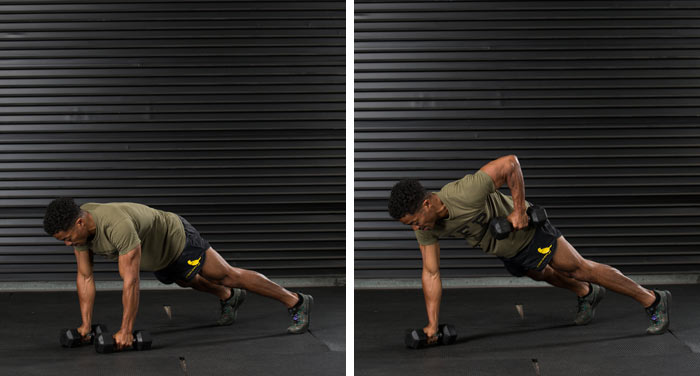
Stand with the feet hip-width apart and hold a dumbbell in each hand. Quickly drop to a plank position by placing the dumbbells on the floor and thrusting the legs out straight. Staying in the plank position, perform one row with each arm alternating. Quickly jump the feet forward, landing in low-squat position before jumping up to the standing position, keeping the dumbbells in the hands. Be sure to maintain a rigid, neutral spine throughout the entire movement sequence by bracing the abdominal muscles.
2. Side-lunge and 1-arm overhead press (10 repetitions on each side)
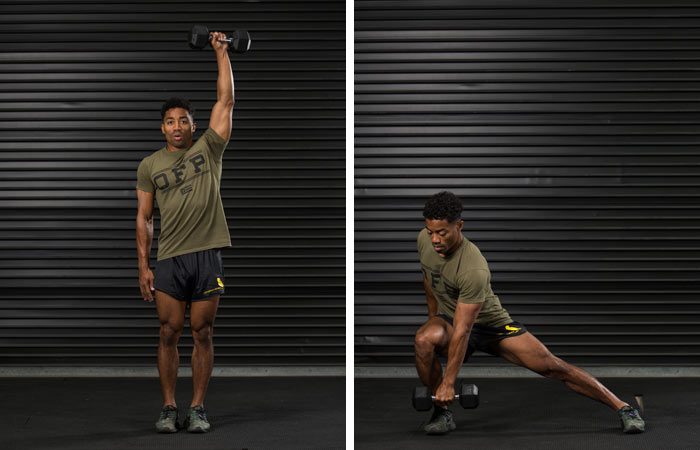
Stand with the feet hip-width apart and hold a dumbbell in the right hand. Lunge laterally to the left side as you bring the dumbbell toward the left foot. Try to touch the dumbbell to the floor in front of the left foot. If you cannot accomplish touching the floor without keeping the spine neutral, decrease the depth and lower the weight to only to shin level so that you can keep the back straight. Push off of the left foot and return to the starting position as you simultaneously bring the dumbbell overhead. Complete all repetitions and then switch to the opposite side.
3. Wide squat with quarter turn hop and chest press (10 repetitions, alternating)
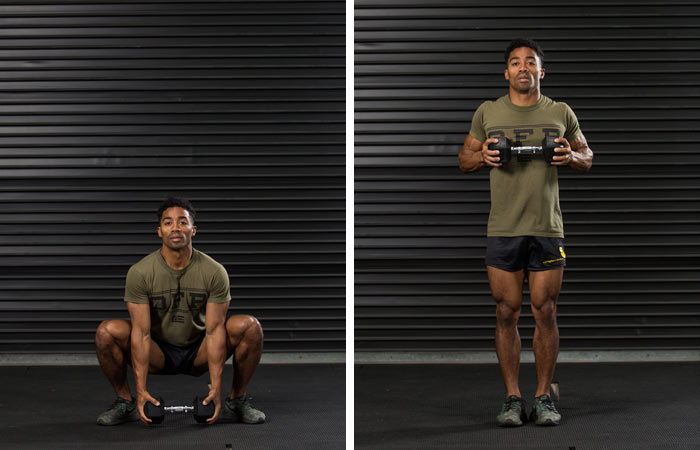
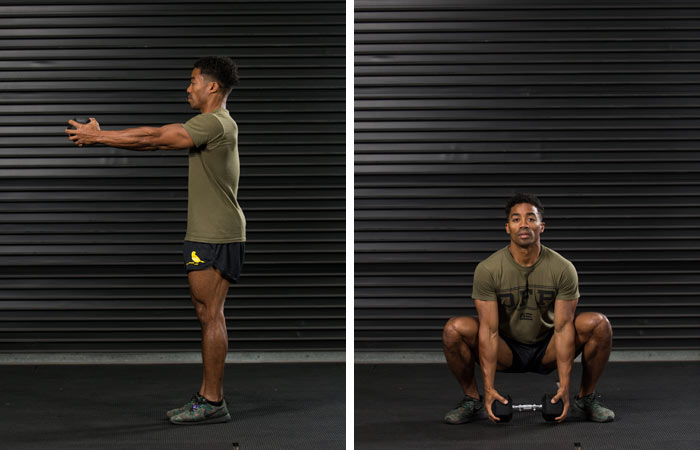
Stand in a wide squat and hold one dumbbell at each end with the arms extended straight downward. Descend into the squat and then jump up bringing the dumbbell to the chest and the feet together. Perform a quarter-turn jump to the right while pushing the dumbbell away from the chest, keeping the feet hip-width apart. Return jump to face the front, landing with the feet in a wide squat position, and return the dumbbell to the chest. Straighten the arms downward and repeat the sequence, starting with the squat descent, but this time, quarter-turn to the left. Alternate from side to side to complete repetitions.
4. Skater with 1-arm lateral raise (10 repetitions on each side)
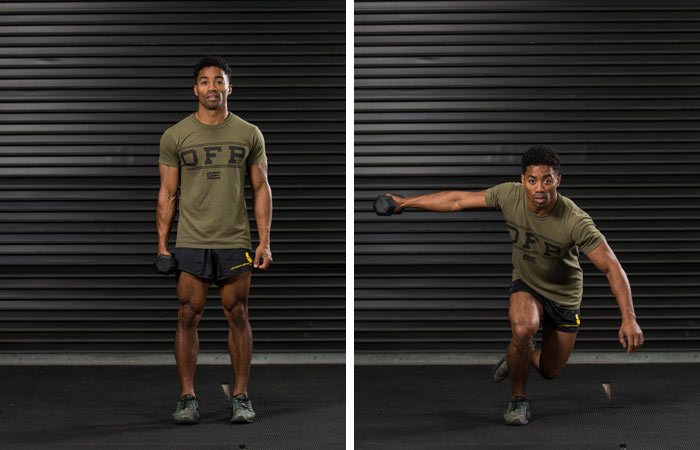
Stand with the feet hip-width apart and hold a dumbbell by the right hip in the right hand with the arm extended straight downward. Keep the left hand on the left hip, as it is not involved in the movement. Perform a skater leap to the right while lifting the dumbbell to the right, stopping at shoulder height. Return to the starting position by performing a skater leap to the left, letting the right arm return to its position by the right hip. Complete all repetitions and then switch to the opposite side.




 by
by 








